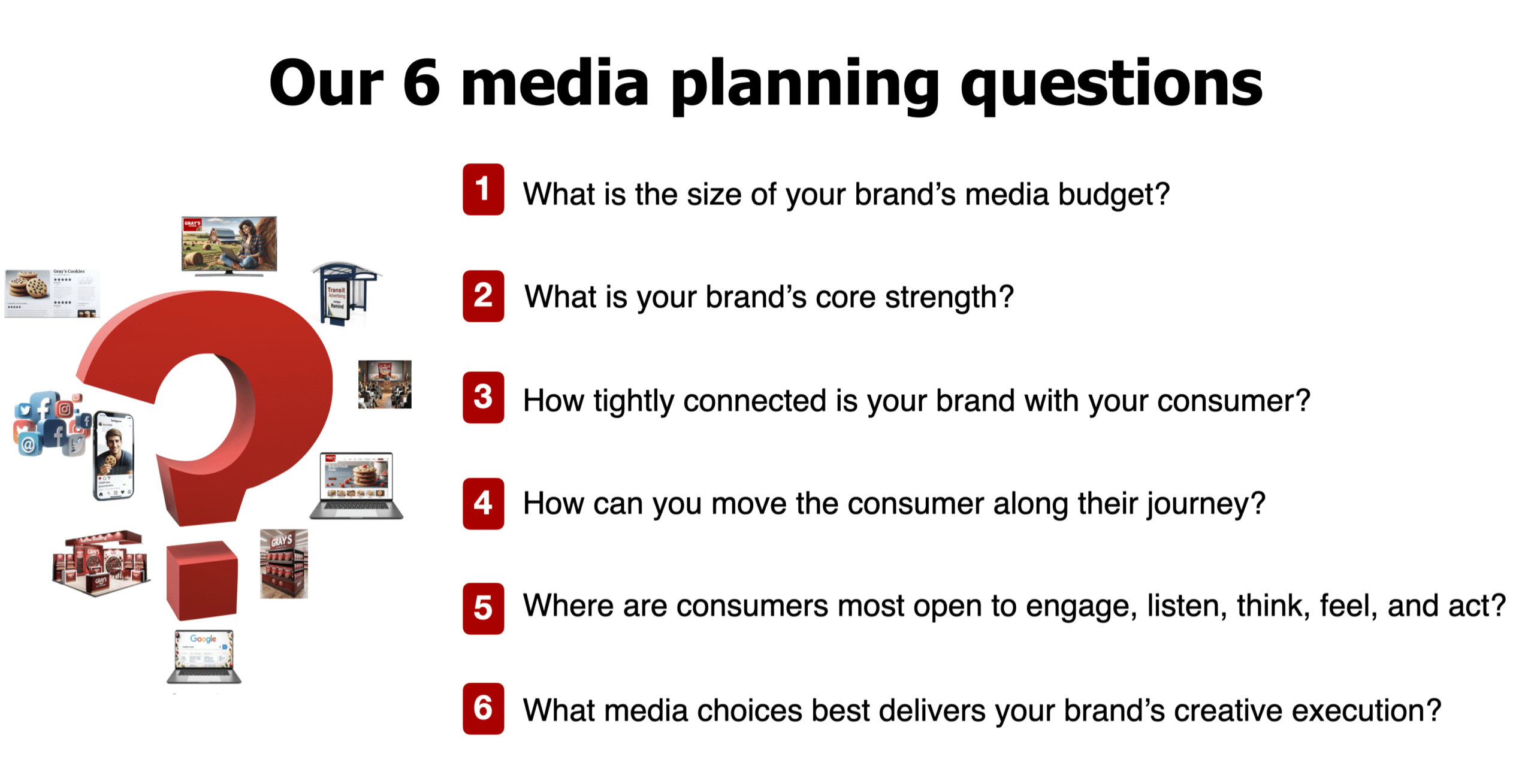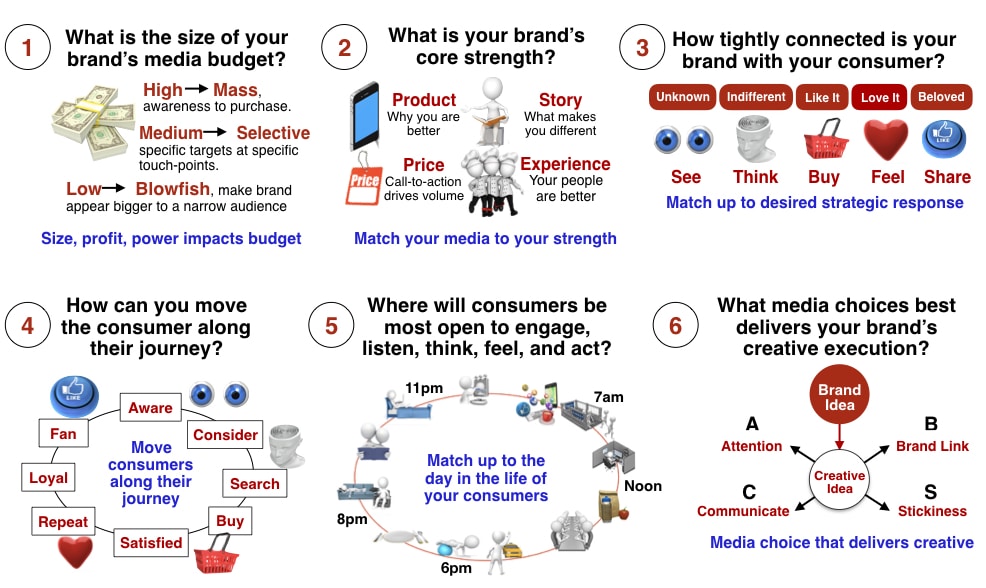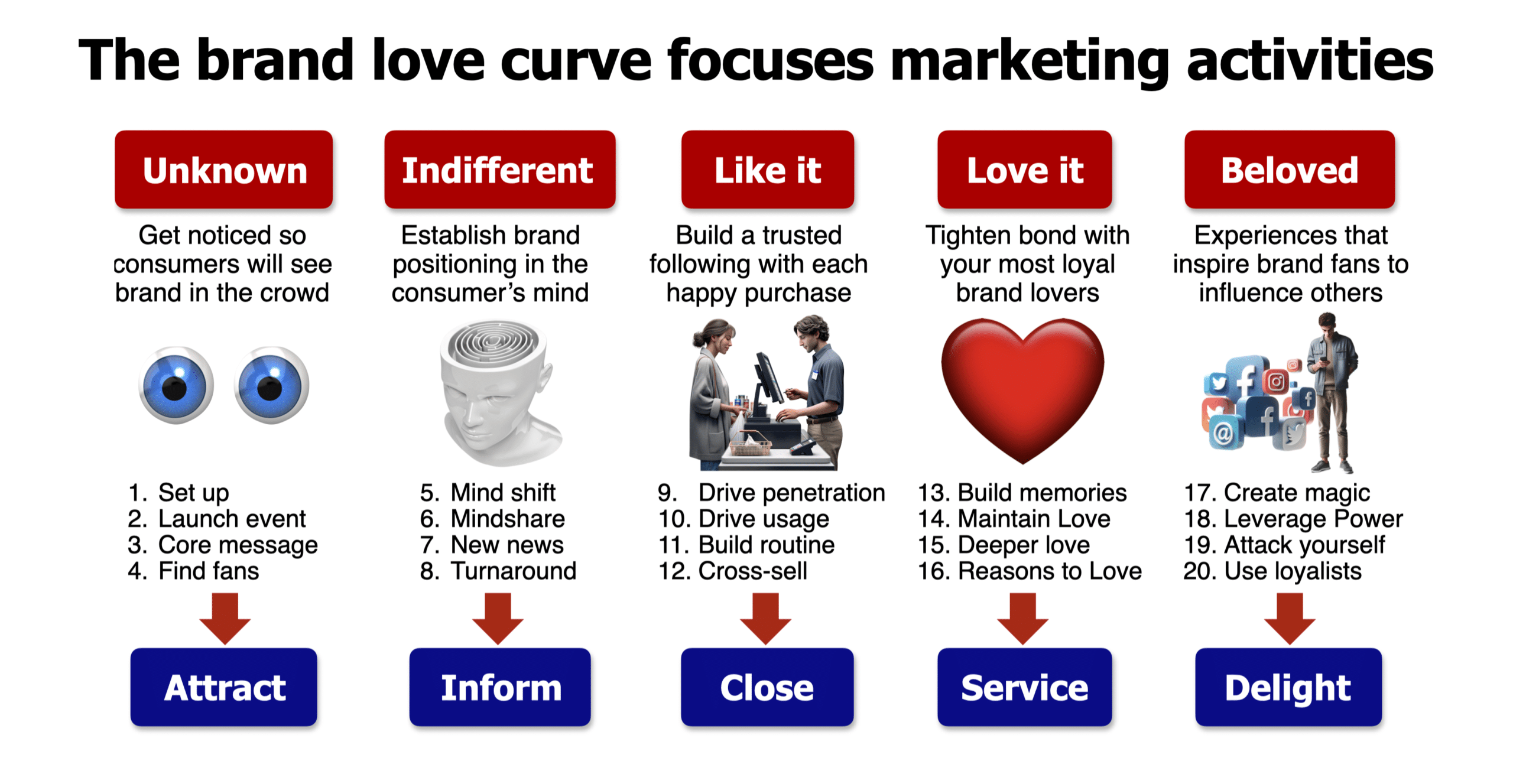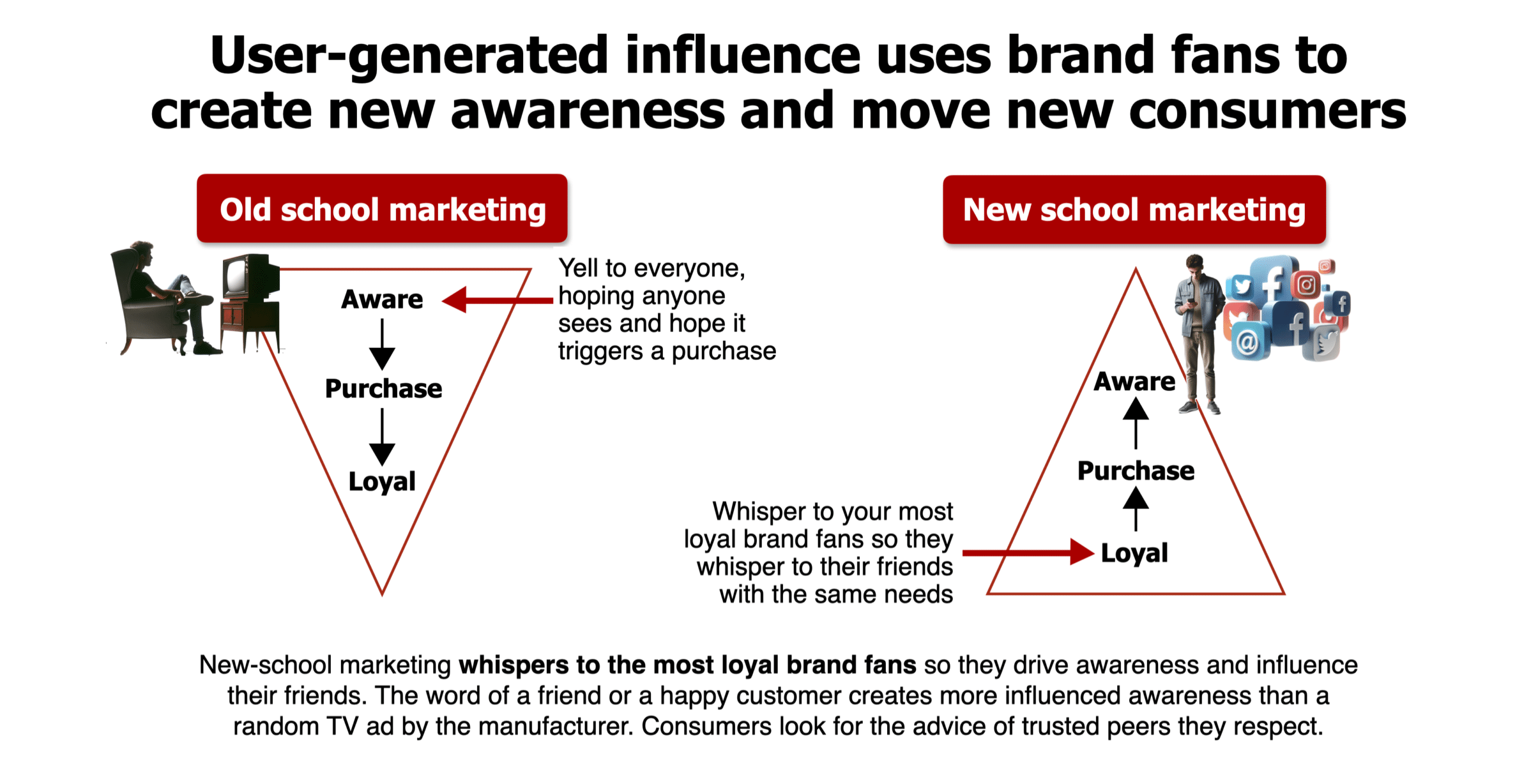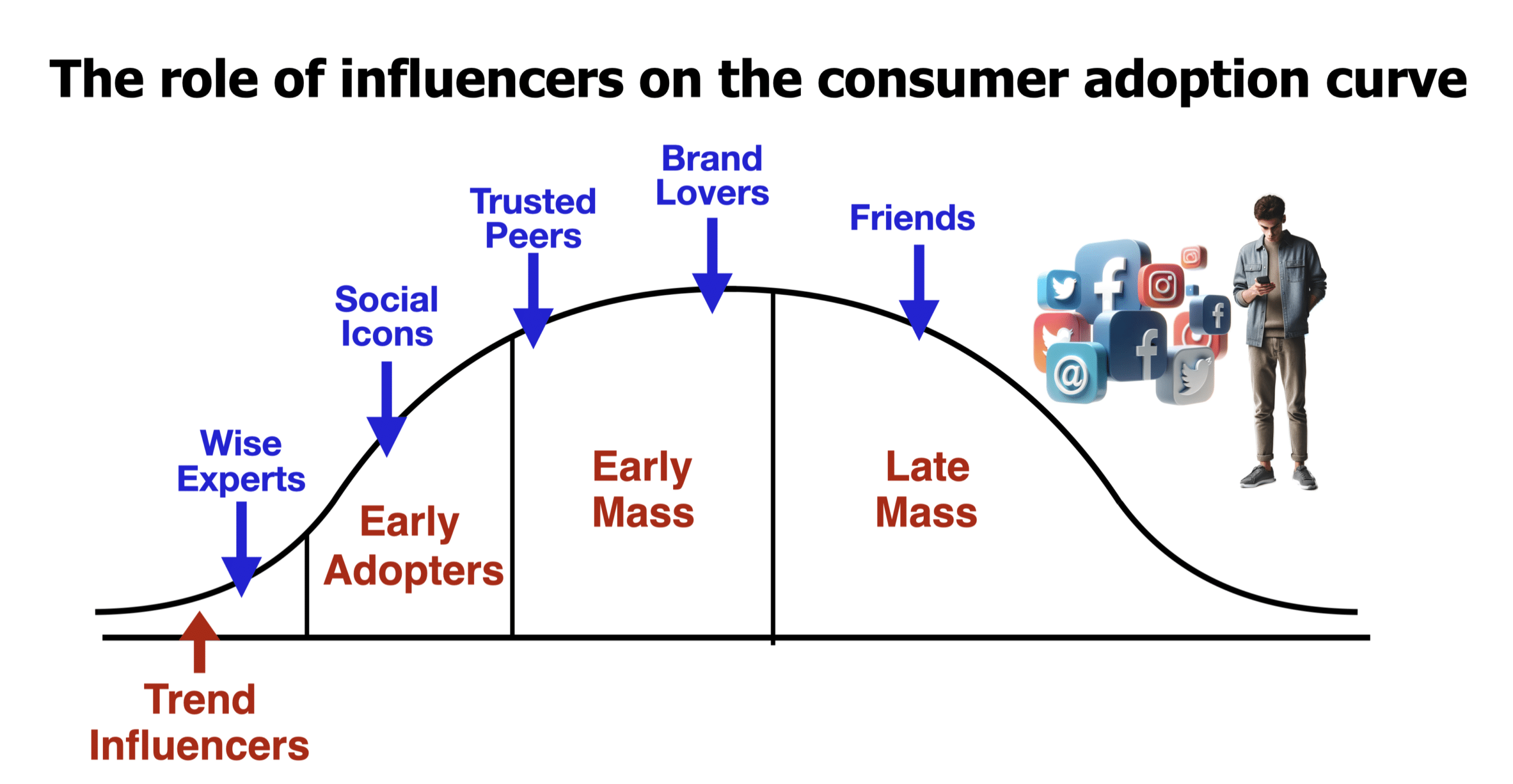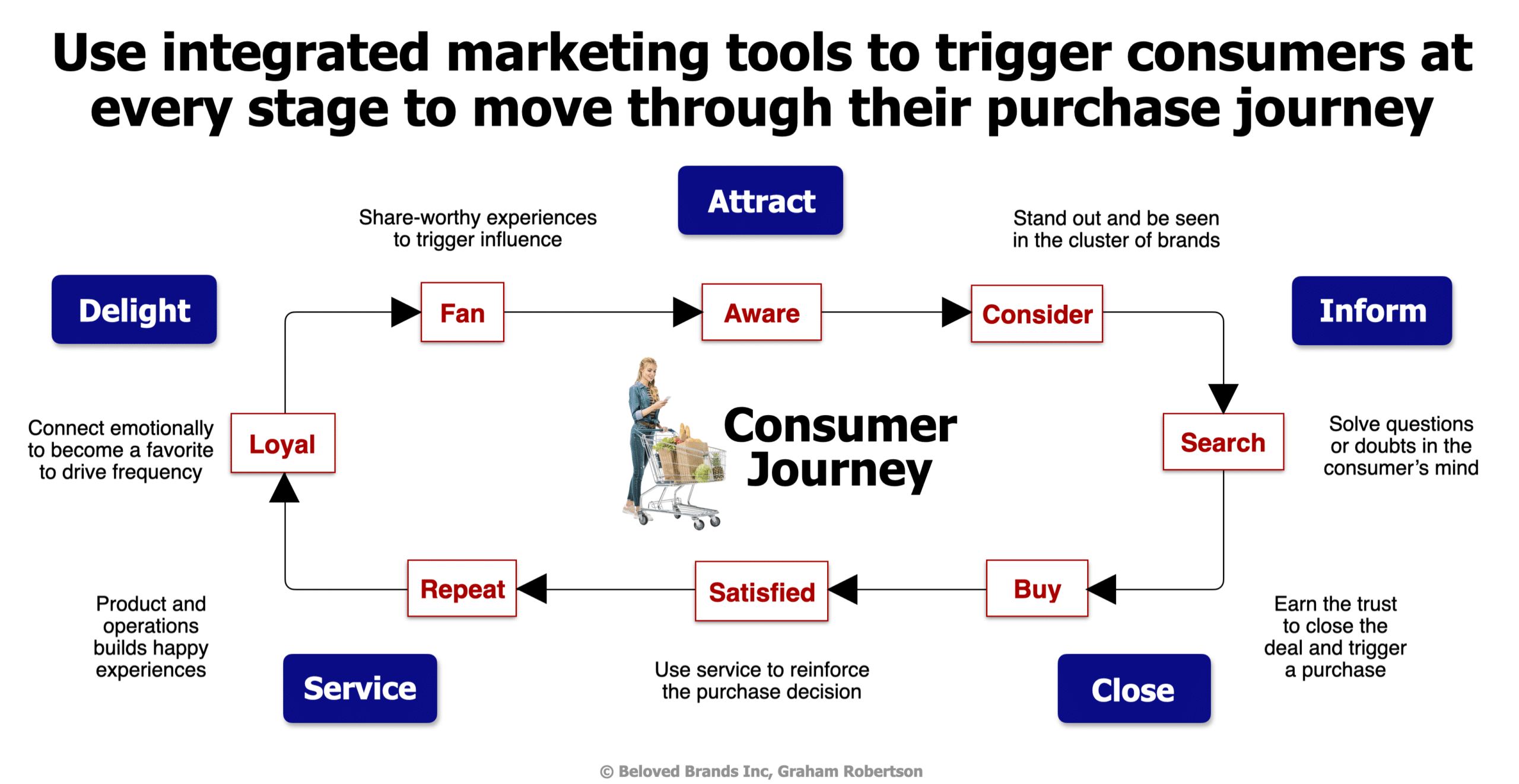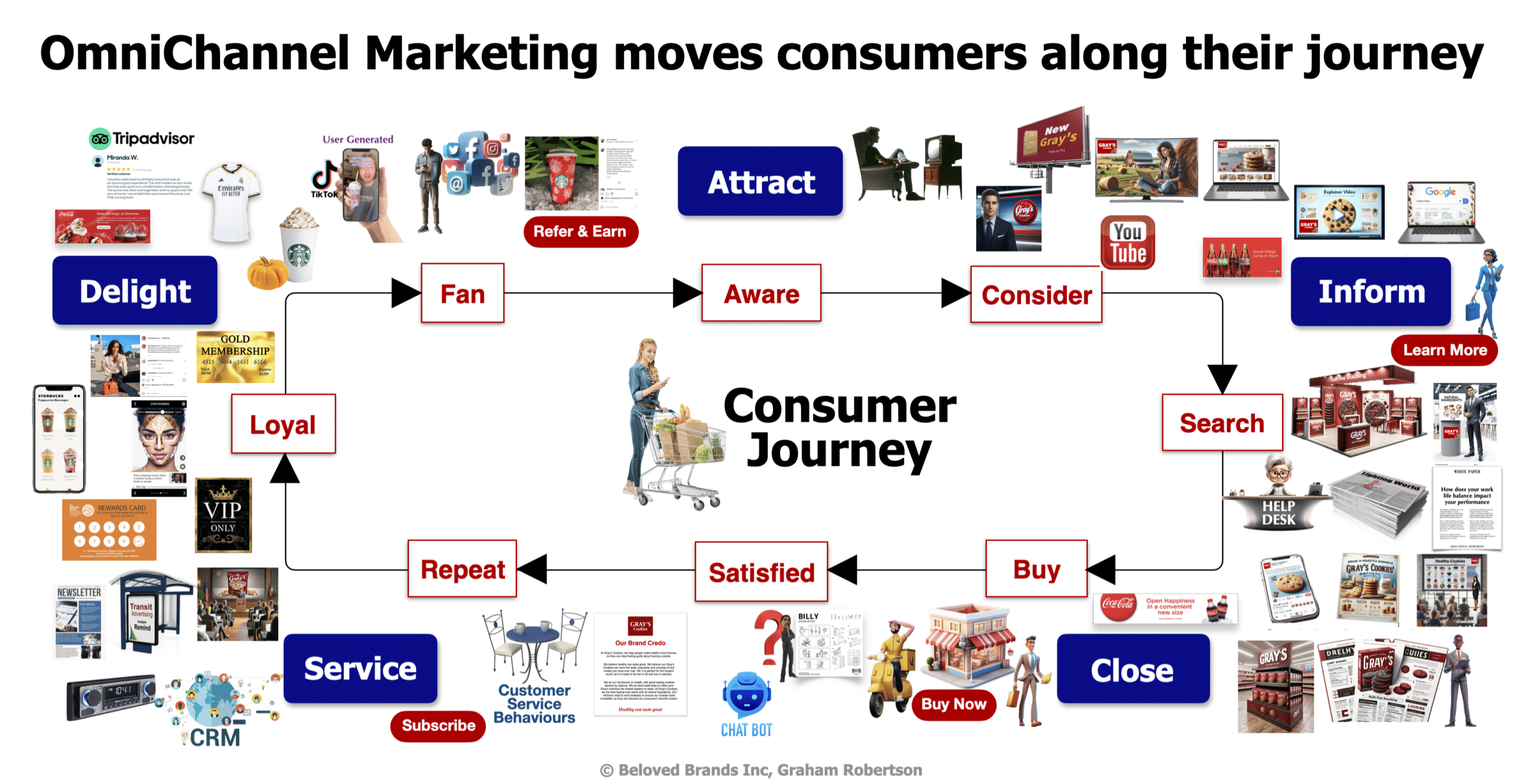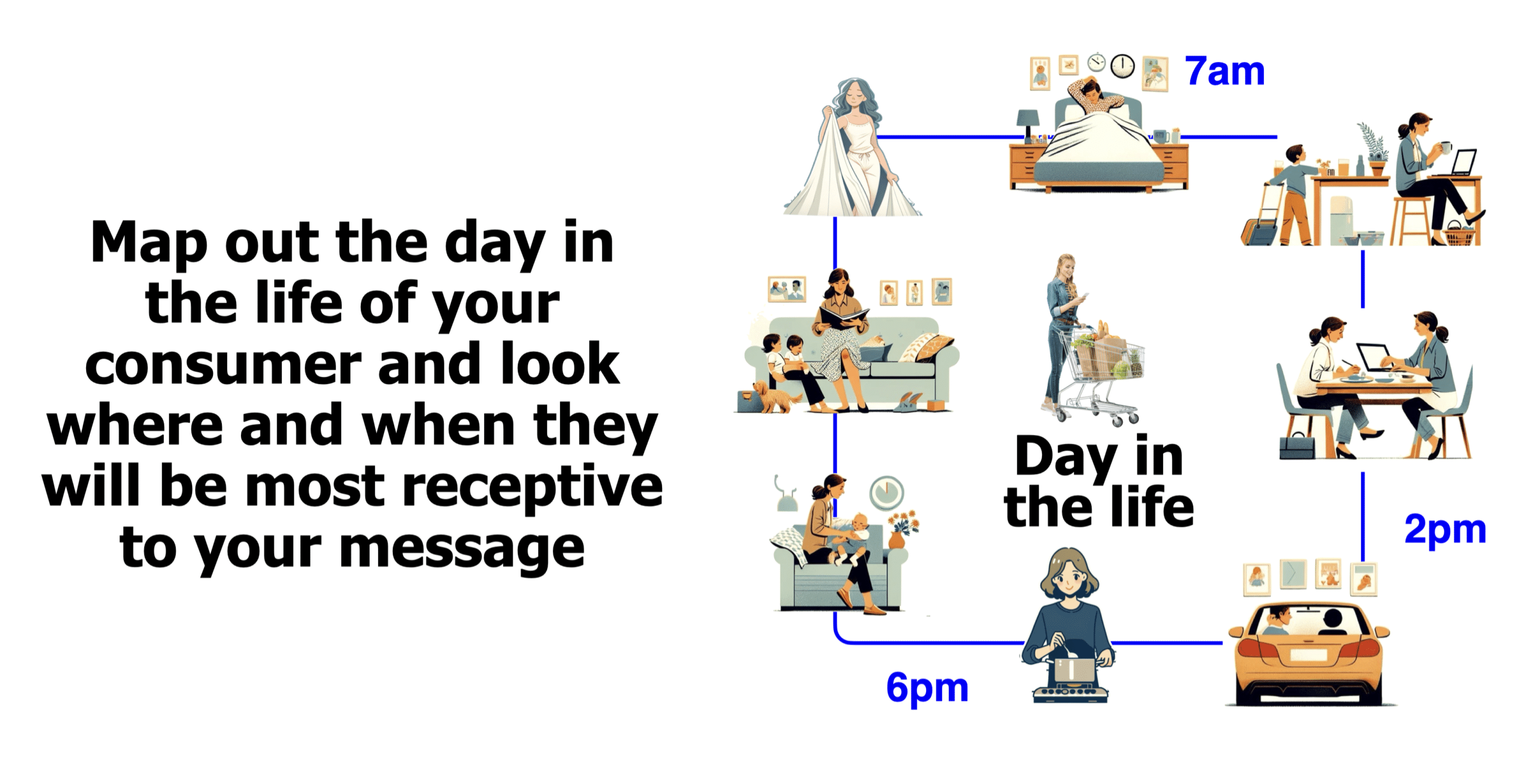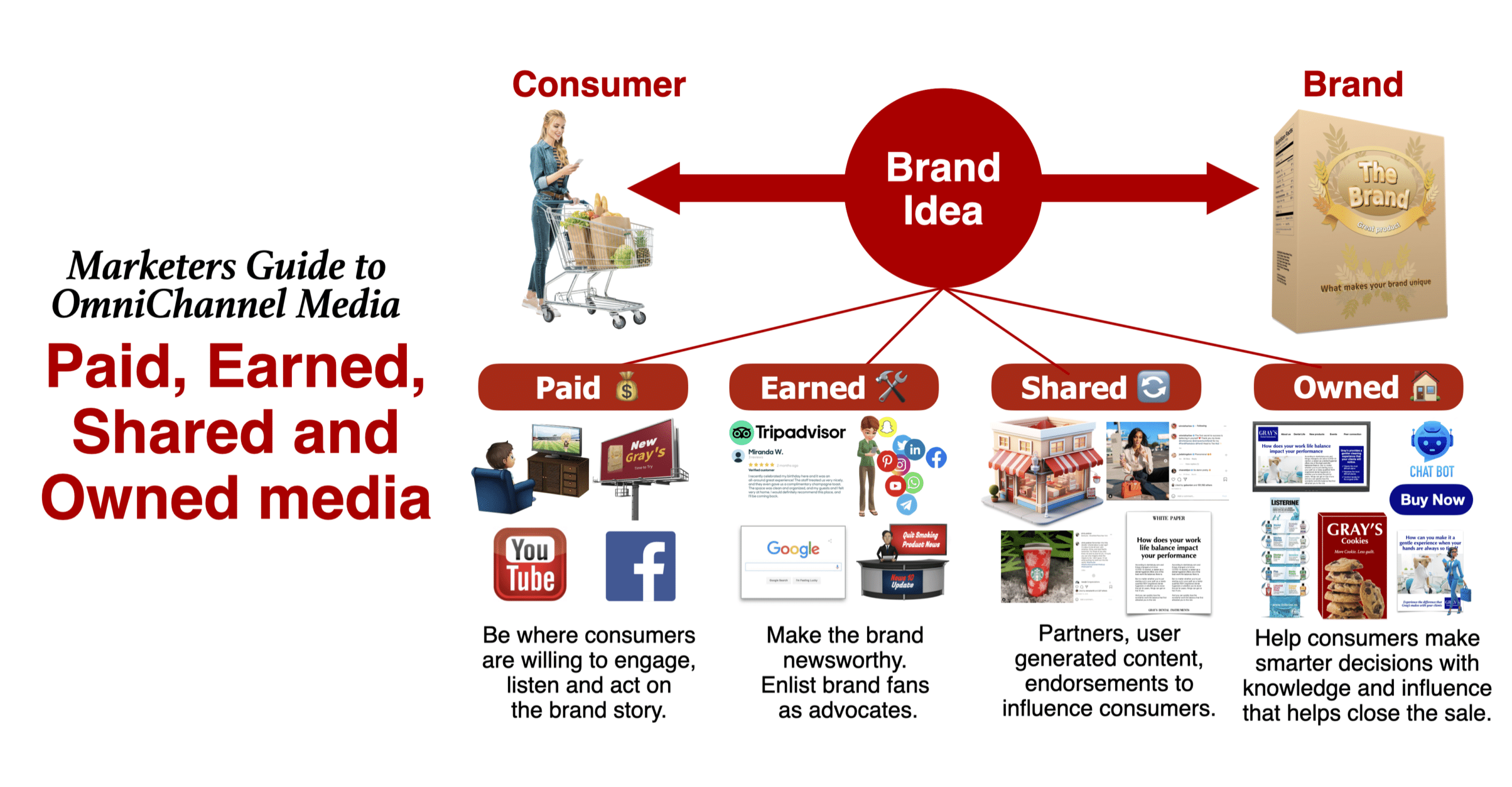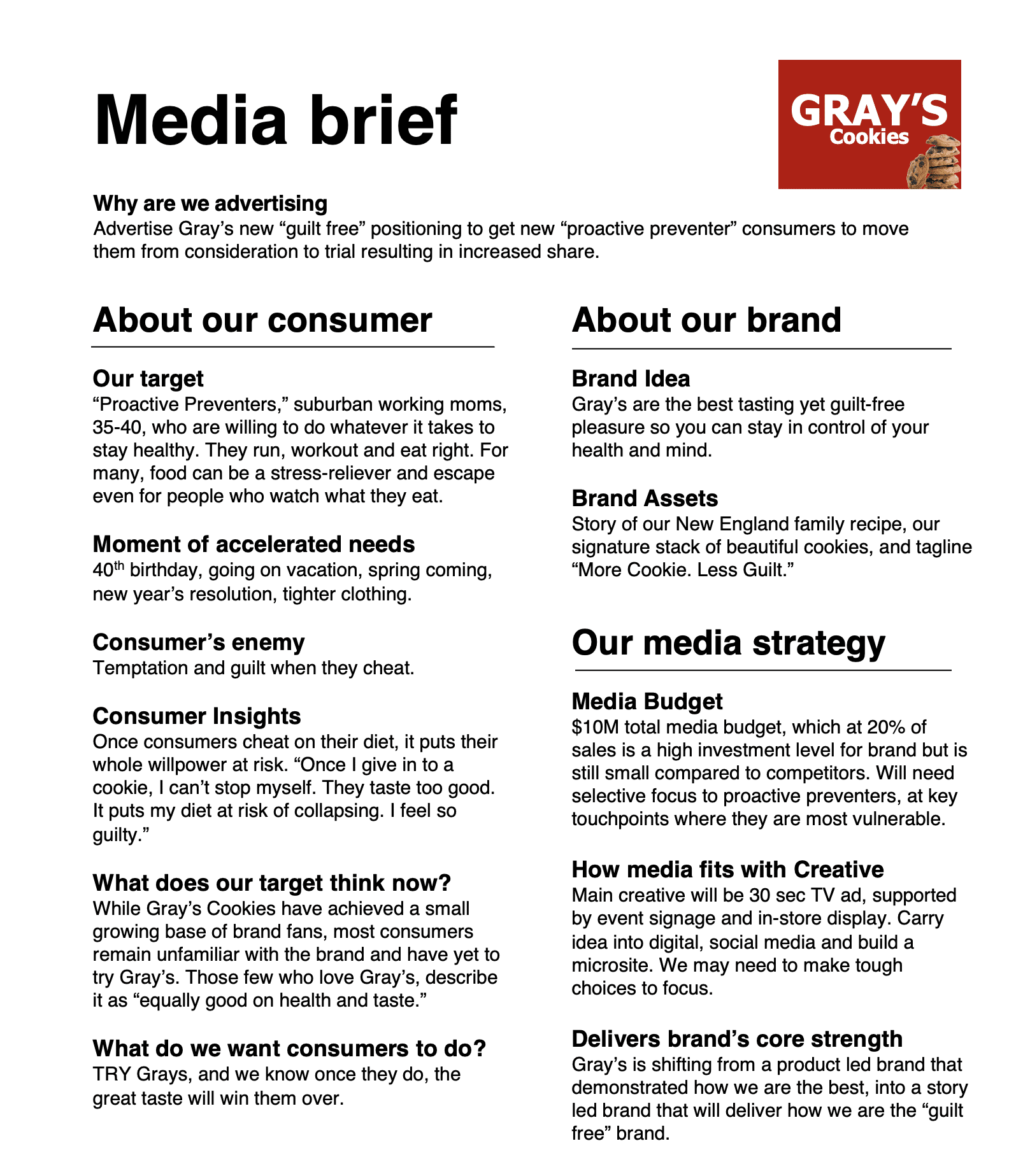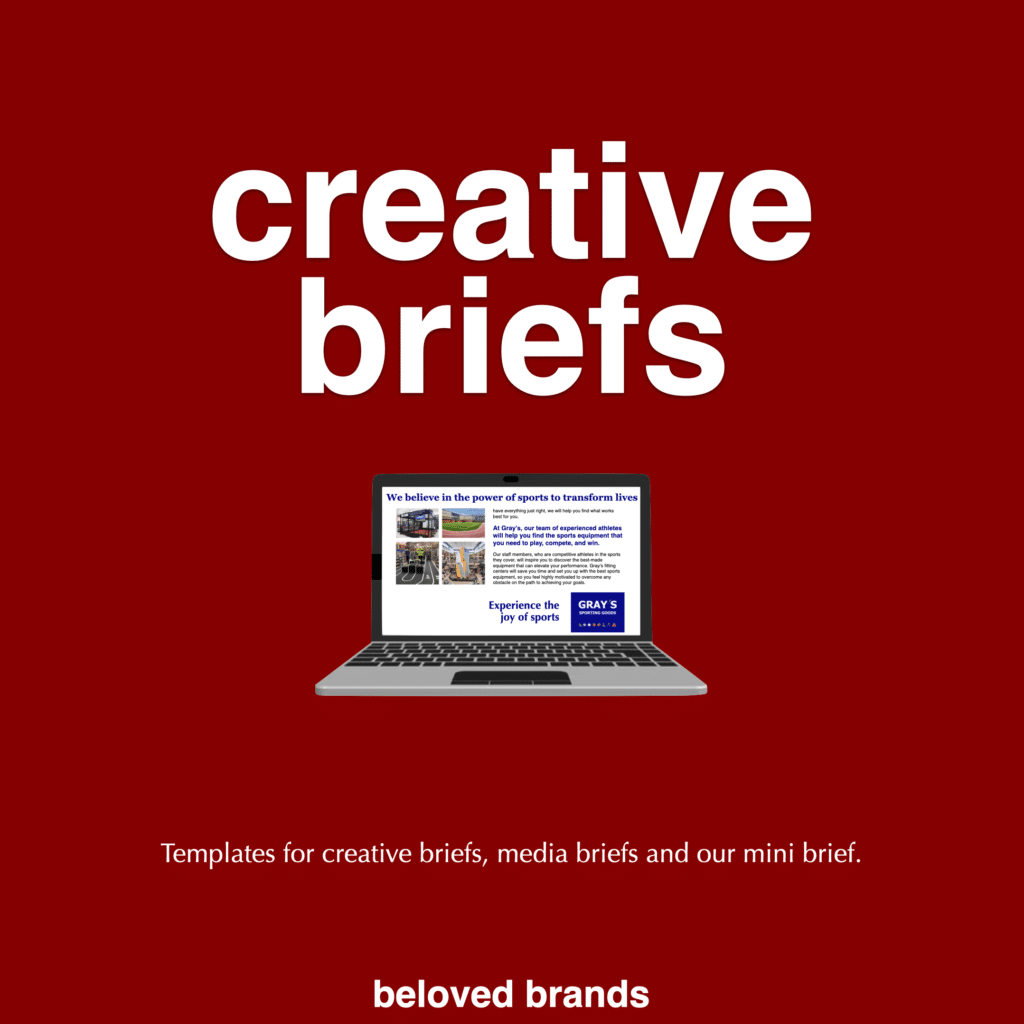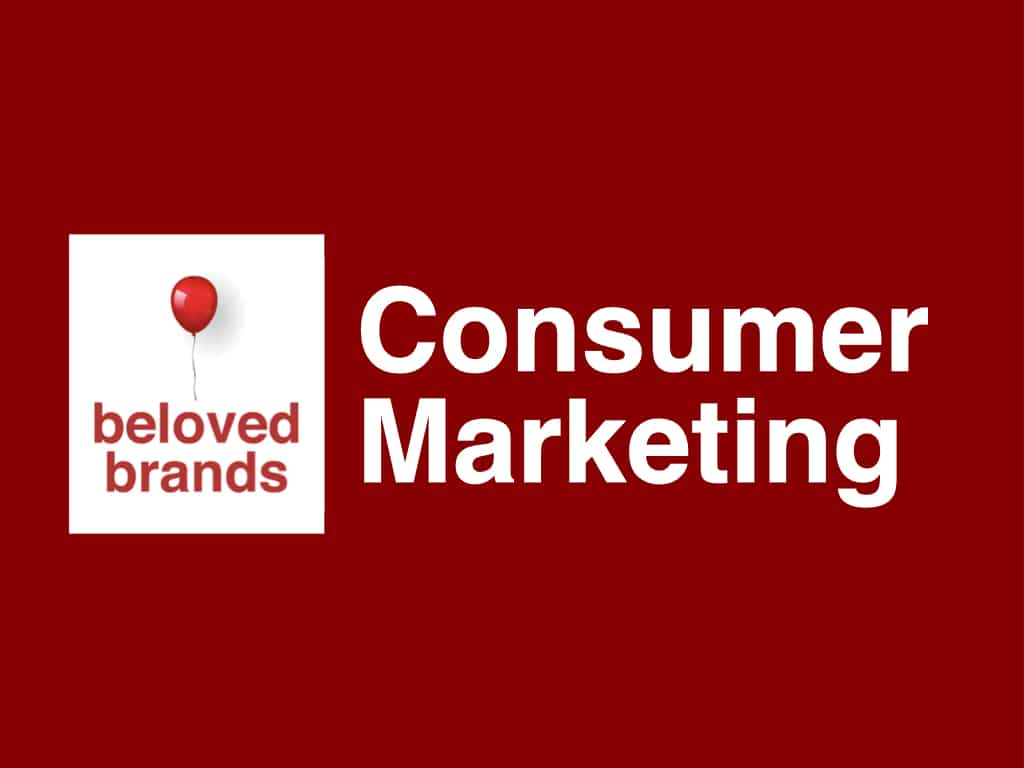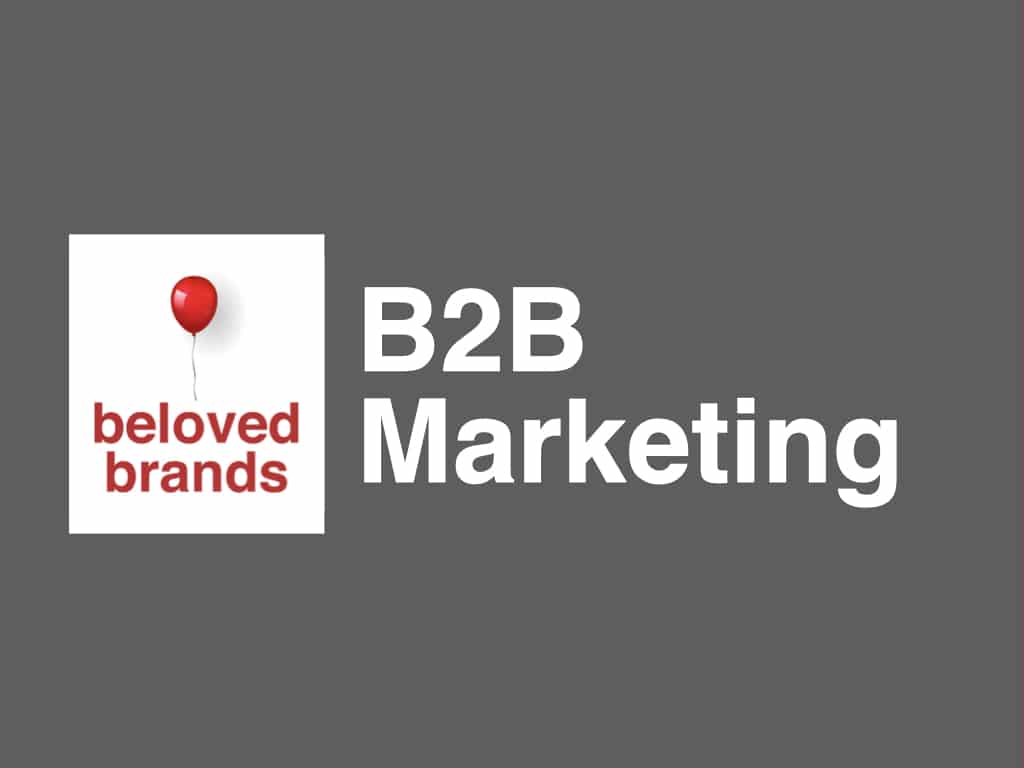As the brand leader, you need to start with the right questions to help you frame your media plan. First, consider factors such as your brand’s budget size, your brand’s core strength and how tightly connected your brand is with consumers. Then, identify which point on the consumer journey you wish to impact, where your consumers are most willing to engage your message and what media choices best fit with your creative execution.
What is a media plan
1. What is the brand’s budget size?
Start with the size of your business and the related gross margins available to spend. Look at the past media ROI and creative advertising results as a projection for success. Identify the brand or business impact from previous campaigns, and match up to potential strategy you are looking at this time.
2. What is your brand’s core strength?
Story-led and product-led need significant budgets, to reach a large audience. Experience-led brands are a slower build and rely on word of mouth. Price-led brands needs efficient media choices to quickly trigger the transaction.
3. How tightly connected is your brand with your consumer?
Where does your brand sit on the brand love curve? Where you sit impacts the communication focus getting consumers to see, think, buy, feel or influence. You should filter based on the degree of competitive threats you face in the market. The higher the competitive battle, the higher the advertising spend.
4. Where can you best impact the consumer journey?
Understand how your consumer moves from awareness, consideration, search, buy, satisfy, repeat, loyal and to becoming a brand fan. Match up to the communication focus of the strategy to the stage where you can have the greatest impact, related to your overall brand strategy in the brand plan.
5. Where are consumers most open to engage, think, listen, feel, and act?
Who is your target? What part of the consumer’s life are they most willing to watch, listen, learn, engage, decide and act? How can you align with their
day-in-the-life or moments during the week or year. Special life-changing moments. Are there adjacent or related products/services linked to your brand?
6. What media choices will best deliver the creative execution?
Your brand idea should drive the creative idea, which then drives your priority for gaining attention, brand link, communication or stickiness. Stay open on media during the creative development process to ensure your creative can fit with the best media choices.
Marketers Guide to OmniChannel Media
To illustrate, we go through 14 different media choices with when to use and what cautions to be aware of:
📺 𝗧𝗵𝗲 𝗖𝗹𝗮𝘀𝘀𝗶𝗰𝘀:
- Starting off with the timeless titans – TV, Out-of-Home, and Print. Why are they still relevant, and when should you lean on them?
🌐 𝗗𝗶𝗴𝗶𝘁𝗮𝗹 𝗗𝗶𝘃𝗲:
- From Digital Display to the mesmerizing realm of Digital Video and harnessing the power of your own video content. The digital domain awaits!
📲 𝗦𝗼𝗰𝗶𝗮𝗹 & 𝗕𝗲𝘆𝗼𝗻𝗱:
- Navigating the bustling streets of social media, leveraging user-generated content, and mastering the art of PR. We’ve got the roadmap!
💻 𝗖𝗿𝗲𝗮𝘁𝗶𝗻𝗴 𝗬𝗼𝘂𝗿 𝗢𝗻𝗹𝗶𝗻𝗲:
- Ever contemplated when it’s prime time to establish your own website? How about acing content marketing or optimizing for SEO? We’ve got the answers!
To illustrate, click X to expand the document and then the > to view each page.
1. What is the size of your brand’s media budget?
Balance the media choices by looking at media efficiency, quality, impact, and fit with the brand. The efficiency of media math starts with reach and frequency.
- Reach is the number or percentage of different households or people exposed to the ad at least once, over a specific period.
- Frequency is the number of times that household or person will be exposed to the ad within a particular period. Be careful to avoid relying on efficiency alone, as you need to balance it with the quality of the media choices.
I always set aside about 10 percent of my media plan budget to create a high impact to generate early attention to a new campaign or product innovation.
Use your strategic thinking to understand how much you can invest. You need to focus your limited resources on a distinct opportunity point you have identified based on a potential change in the market.
The reasons you would strategically invest in media include:
- Discovery of a new brand message you know will motivate consumers to buy your brand.
- Identified change in consumer needs, motivations, or behaviors, which will benefit your brand.
- Shift the competitive dynamic, with an opportunity to make gains or a necessity to defend.
- Continue to fuel brand growth with a window to drive brand profits.
- New distribution channel you can use to move consumers through before competitors do.
- The launch of a breakthrough product innovation offering a competitive advantage to your brand.
To make the media investment pay off, you need to be able to drive a performance result that pays back with an increase in brand power you can use in the future or an immediate increase in brand profit.
Six factors to guide you on the size of your media investment:
- First, look at your brand profit situation, looking at margin rates and the size of the business.
- Next, look at your past media ROI projected forward as a forecast of the potential.
- Third, what is the impact of your current creative advertising tracking results
- Then, look at future investment opportunities or future threats to battle.
- Also, look at the degree of competitive pressures in the marketplace and their levels of media spend.
- Finally, look at the comparative opportunity cost for investing elsewhere.
2. What is your brand’s core strength?
Deciding whether your brand will be story-led, product-led, experience-led, or price-led impacts your brand message and related media choices.
If your brand is product-led, focus on standing out with trend influencers and early adopters. Use an interruptive and visual media choice, such as TV or online video, to demonstrate and explain what makes your product better. You can share the video demonstrations on your brand’s website or through social media. Invest in search to help consumers who may have questions and need more information. Mobilize expert influencers to trigger trend influencers and early adopters to make informed purchases.
For story-led brands, build a media plan that creates a movement behind your idea, purpose, core belief or a stance. Connect with like-minded consumers who could become potential early brand lovers and influence their network to turn your brand into a movement. Bring your brand’s concept, purpose, or story to life using emotional storytelling media, such as TV, long-copy print, storytelling content built to share. This approach allows those early brand lovers to spread awareness with influence and gives your brand an active voice on social media.
Experience-led brands go slower
When your brand’s strength is the consumer experience, building your brand awareness takes time. Be patient. The slower build will be well worth the time invested once you hit a tipping point. Start by engaging key influencers and expert reviewers (industry critics) early on to reach the trend influencer consumers who will build word-of-mouth within their network. Build and manage the online customer review sites (Yelp, Trip Advisor) to entice other users to try your brand’s fantastic experience.
Consider allowing your staff to share their personal, authentic “wow” stories to become part of the brand’s communication. It is your great people who make the difference. The voice of the consumer will make or break the brand early on.
When you are a price-led brand, you need high sales volumes to cover the lower margins. The most successful price brands invest in call-to-action, efficient media options, such as 15-second TV, digital display, or radio ads. Use traditional and online price tools, such as flyers or online coupon sites. Use the point of sale media to trigger transactions.
3. How connected is your brand?
For unknown or indifferent brands, invest in the early part of the consumer journey, with media focused on building awareness to establish the brand positioning in the mind of consumers to separate your brand from the pack. You also need to get your brand into the consumer’s consideration set.
Brands at the like it stage must separate themselves from others, to build momentum and create a following. Focus on closing the deal, by motivating consumers to buy. You can use search tools and deal-closing claims at the point of sale to resolve any remaining doubts. You can utilize your own e-commerce website or sites such as Amazon, Expedia, or Groupon.
Build on the emotion of brand love
Brands at the love it stage must turn your consumer’s repeat purchases into higher usage frequency and become a favorite part of your consumer’s day. The creative must instill emotional benefits, linked closely to the consumer’s life moments. An excellent tool to use is to map out the “day-in-the-life” of your target consumer and place messages where they are most likely to engage. Use consumer insights to make the messages personal to make consumers feel special and attached to your brand.
At the beloved brand stage, you should begin shifting to a maintenance media plan, enough to maintain your brand’s leadership presence and perception. Stay aware of the competitive activity, which may force you to adjust your budget levels. At this point, you can shift some of your media resources into enhancing the consumer experience, to retain your happy consumers, and to drive a deeper love to harness an army of brand lovers. You can begin creating shareable experiences for your brand lovers to share with their friends.
Brand love
To illustrate, click on the media plan diagram to how the consumer strategy impacts your brand message.
Our Beloved Brands Marketing Training will make your marketing team smarter
Invest in our Beloved Brands Marketing Training today and start seeing an immediate impact with smarter solutions, better work, and stronger results for your team.
- We build essential Marketing Skills: Our Beloved Brands Marketing Training will equip your marketing team with the essential marketing skills to meet your expectations, including brand analytics, strategic thinking, brand positioning, strategic planning, and marketing execution.
- Marketers will work on their own brand: We impact your marketing team’s on-the-job performance by ensuring your marketers apply every new tool, method, and skill directly to their brand.
- Our marketing coaching is like having a VP in the room: Our hands-on coaching replicates real-world challenges, with your marketers experiencing the pressure and expectations they face in a boardroom
- Tailored Training Programs: We provide specialized marketing training tailored to different business models, including Consumer, B2B, Retail, and Healthcare brands. Our industry-specific examples demonstrate how easily our tools work on a brand like the marketer is working on.
4. Where can you best impact the consumer journey?
Old-school marketing used to yell their messages at every possible consumer using mass media, then move consumers naturally through the brand funnel from awareness to purchase and loyalty. With so few media planning choices, consumers could not escape the advertising.
If consumers did not respond the first time, show it to them again and again. Back in the 1970s, it was all about the interruption of consumers, with brands focused primarily on day-after brand recall. Many times, the more annoying the ad, the better it would work. This media planning is not quite the sophisticated media strategy brands need today.
New-school marketing whispers to the most loyal brand fans, hoping they drive awareness with influence to their friends. The word of a friend will bring more influence to their purchase decision than a random TV ad. As the brand moves to the masses, consumers look for the advice of trusted peers whom they respect to know enough about the latest and greatest of the category. They also look to the brand lovers, giving them evidence the brand does deliver what it promises.
To illustrate, click on the media plan diagram to how new school marketing impacts your brand message.
Influencers
How the role of influencers can help your brand
In the brand strategy section, I showed you how brands evolved from a craft brand to a disruptor, to a challenger brand and finally to a power player. One significant distinction is what type of consumers they focus on. I introduced the idea of a consumer adoption curve, which leverages four types of consumers:
- Trend influencers
- Early adopters
- Early mass
- Late mass
I will use this thinking to show how brands can use influencers to trigger each type of consumer, as the brand evolves from the entry-level craft brand to the power player mass brand.
To illustrate, click on the media plan diagram to how the consumer adoption curve impacts your brand message.
The trend influencer consumers always want leading-edge stuff and are first to try within their social set.
They stay aware of what the wise experts are saying, whom they trust or rely upon for knowledge. For brands competing in the car, sports, technology, fashion, entertainment, or foodie markets, there are leading expert reviewers or bloggers who have become the voice of the marketplace. Marketers who have a real revolutionary addition to the category should target and brief these wise experts to ensure they fully understand the brand story and point of difference. This information increases their willingness to recommend new products.
The early adopter consumers rely on their trend influencer friends for the details of new brands.
However, they will also look to social icons as a secondary source for validation. These social icons could include movie stars, singers, or famous athletes. If the social icons are using the new product, this assures the early adopter the new brand is about to hit a tipping point. These consumers always want to stay ahead of the curve, so that they will adopt it now.
The impact of brand lovers on the mass market
Early mass consumers look for the advice of trusted peers whom they respect within their network. These are the people we go to for advice on a given subject. The early mass also looks to early brand lovers for validation of proven success; This satisfaction level gives them evidence the brand does deliver what it promises. The late mass audience is slow to adopt; they look to friends for recommendations but only when they feel comfortable enough to buy the brand. Using media to move consumers along their journey
To drive awareness, you need to stand out and be seen in a crowd. Invest in mass media to gain entry into the consumer’s mind using TV, digital, viral video, out of home, or magazine. Where it makes sense, sponsorships, and experiential events can increase the consumer’s familiarity with the brand.
To move consumers to the consideration stage, use influencers to teach those seeking to learn more. Use public relations to make the brand part of the news, whether through traditional, social, or blogger channels. Build a media plan that engages the online user review sites like Yelp, Trip Advisor, or review sites.
To illustrate, click on the media plan diagram to how the consumer journey impacts your media decisions.
For more complex or higher risk purchase decisions, consumers will rely on search for almost everything, even if to confirm what makes sense.
Marketers can use search sites, such as Google, expert review sites, and online content, or long copy print media. The brand website comes into play and should include the right information to close off gaps or doubts, then move consumers towards the purchase decision.
Media plan options should help trigger purchase, include point-of-sale advertising, with in-store signage, displays, and sales materials to prompt consumers at the purchase moment. Remarketing is a great tool to push consumers who might feel stuck at the consideration stage to reconsider and buy.
Cultivate brand fans who will become outspoken advocates
After the purchase, turn usage into a ritual among your most loyal users. Cultivate a collection of brand fans, using VIP programs and experiential events with exclusive deals — layer in emotional advertising to tighten the bond.
Once you have a strong base, you can mobilize your brand lovers, by intentionally creating shareable experiences, which will trigger brand lovers to share with their network through social media. With the new social media tools, the smartest brands are getting their most engaged consumers to drive awareness.
To illustrate, click on the media plan diagram to how the consumer journey impacts your media decisions.
5. Where is your consumer open to listening?
Place your media on the part of the consumer’s life where they will watch, listen, learn, engage, decide, and act. Align with life moments, whether they are parts of the day, the week, the year, or even milestone moments in their life.
A smart tool for media planning is to map out the day-in-the-life of your consumer, to try to understand what they go through and where they might be most receptive to your message.
You can take this same tool and map it over the consumer’s life, especially to tap into those life moments when people are most willing to reconsider brands. It might be a stage of life, such as going away to university or getting your first job or having your first child. Each life moment is a chance for brands to get consumers to reconsider their current choices.
To illustrate, click on the media plan diagram to how the day in the life impacts your media decisions.
6. What is the best media to deliver the creative?
During the creative process, stay open on media choices
At the start of any creative project, it is hard to know the exact media choices because you have not seen the creative work yet. While writing the brand communications plan, work on a media plan guideline that picks a lead media only and a few potential secondary media options to explore without committing. At the creative meeting, ask to see each creative idea presented as a 30-second TV ad, a simple billboard, and a long-copy print ad.
With this request, you will be able to see how each idea plays out across almost every possible media type.
- The 30-second video script can be repurposed to fit TV ads of any length, movie theatre ads, viral videos, or a video on your website.
- The long copy print can be repurposed to fit with content blogs, news stories through PR, newspapers, magazines, website information, and sales brochures. It can even be atomized, broken down into digestible bits to populate a brand’s social media content.
- The billboard can be repurposed for outdoor signage, digital display billboards, posters, in-store display signs, or even a magazine’s back cover designs.
Use the brand idea to align every media choice.
This process allows you to make creative and media decisions together. You will see the ads in context to figure out the best combinations for your brand. Also, you will be able to see the possible breadth of each creative idea, which can provide a clue to the campaign’s longevity. In today’s cluttered media world, the brand idea should help organize all four types of media, including paid, earned, shared, and owned.
To illustrate, click on the media plan diagram to how the brand idea impacts your media decisions.
Media brief
Turn your great thinking into a media brief
To illustrate, click on the media brief.
Read how to write an inspiring creative brief
Media Brief template
Now, you can get our ideal creative brief and media brief package
Get our Creative Brief template, Media Brief template, and our Mini Brief template in a downloadable PowerPoint file.
This includes a ready-to-use formatted blank slide with key marketing definitions where you can insert your own creative brief, media brief and mini brief for specific projects. These tools help build your media plan.
What type of marketer are you?
We believe that marketers learn best when they see our marketing concepts applied to brands that look like their own. We have come up with specific examples – consumer, B2B and healthcare – to showcase our marketing tools. Click on the icon below to choose your interest area.


